I made it all the way through the Intermediate Crazy Quilt Course with Kathy. This last task included specific requirements for seam treatments but it was really open to choice. Obviously, I will continue to work on this project so that I can piece it all together, but I don’t plan to post about it along the way. It might be quite some time before I get to the finish line!
First, let me tell you how I envision the overall mini-quilt. Because this course focused on motifs, I want the seam treatment to be less of a showrunner than my previous projects (see my BCQC block 1 and block 2). I want them to recede a little, but also pull the whole thing together. I took a cue from my real crazy quilt and am going to use mostly one colorway for all the seams (browns).
If you are a long time follower, you’ve seen this quilt many years ago, but the one below is the one I am referring to (with matching pillow!). It is made with fabrics from my family members: silk ties, couch upholstery, cheerleading outfits, dresses, etc. My aunt led the project, and my grammas, great gramma, and mom helped embroider. My aunt is a master quilter so all high school graduates got something really phenomenal. The added motifs sometimes were chosen specifically because it was being made for me. For instance, my friend Tiffany gave me the fabric star you see in the first block and my aunt included jazz ladybugs on the yellow satin in the top row because I had a music background (I played the violin).

My gramma stitched a graduation cap in the top center block (upside down because of the quilt hanging), and my aunt (who made my senior prom dress) included a miniature version of my dress (second block, second row). I also had a tarantula, so there is a spider web included – can you find it?
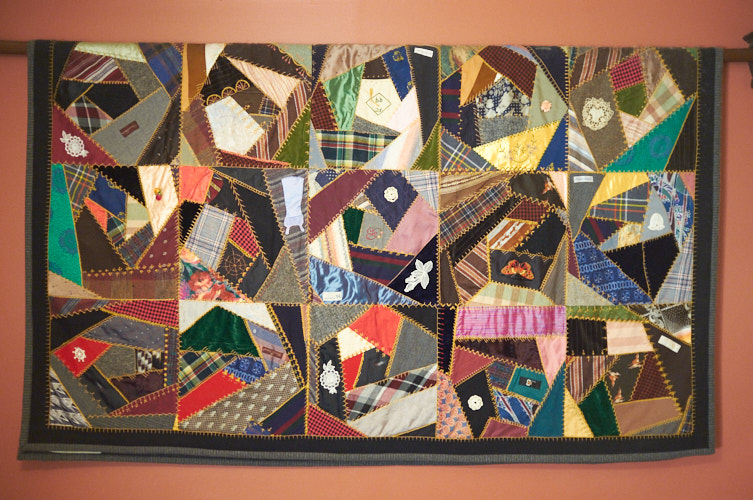
I decided earlier this week to sit down and actually catalog the seams, which are almost only one kind of gold perle cotton (with rare additions of floss in deep pink or dark green). It was a fun test – I actually know the names of quite a few stitches now and I remember struggling when I first began learning. It took much longer than I ever thought it would – several hours! There are over 400 seam treatments (I lost count). On average with this count, each block sported about 15 seam treatments as there are 30 blocks. I recorded unique seam treatments, even if they varied only by the addition of a French Knot and came to 112 unique stitches on this quilt! I don’t think my foremothers would have ever suspected I would investigate their work – this process was much more interesting than I would have imagined because not only did I find stitches I can’t recognize, but I think I can associate groups of blocks to a particular person based on choices and execution. Fun stuff!
So that is my motivation to choosing simplified seams – and I am going to incorporate seams from this quilt as an homage of sorts.
Ok, so here we go, back to the subject of this post!
On this block, I added a pearl stitch between the two motifs, and then a stitch from my quilt: a straight feather stitch with three varying bars.
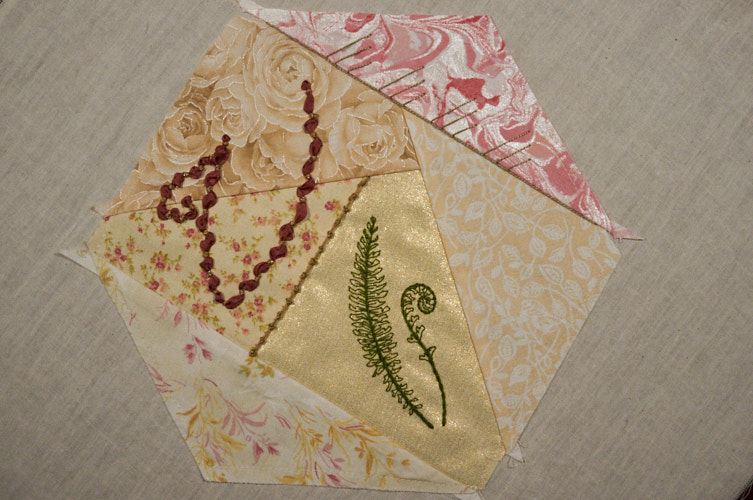
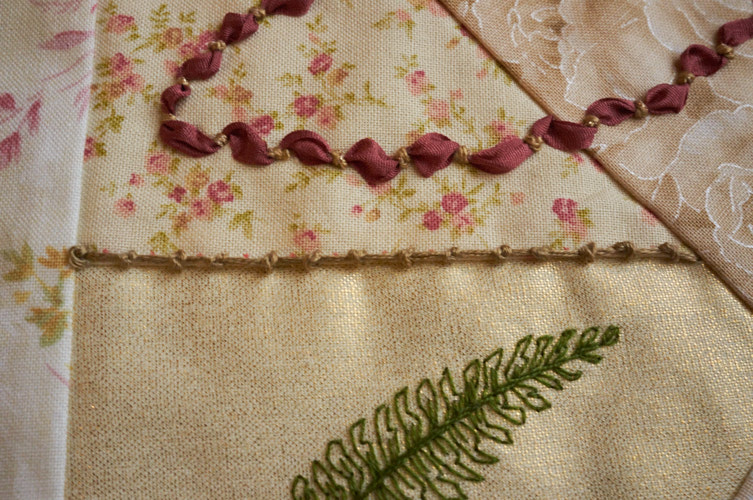
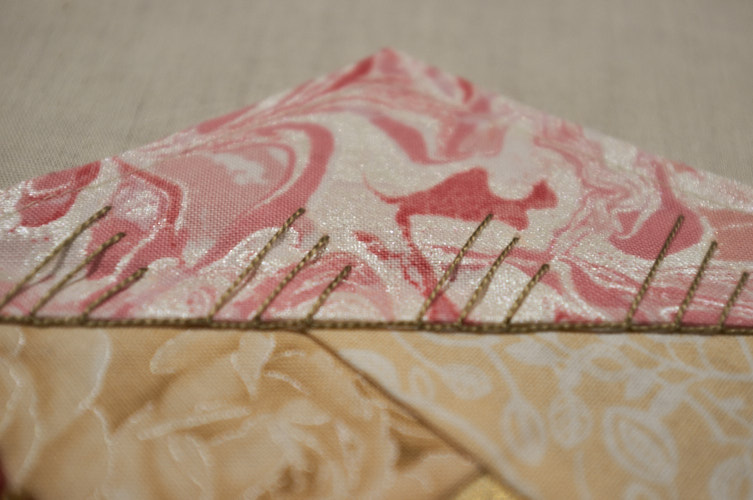
This block got a zigzag stitch with woven roses tucked in embellished with daisy leaves filled by straight stitches. I began another seam with a stem stitch, but this wasn’t part of class.

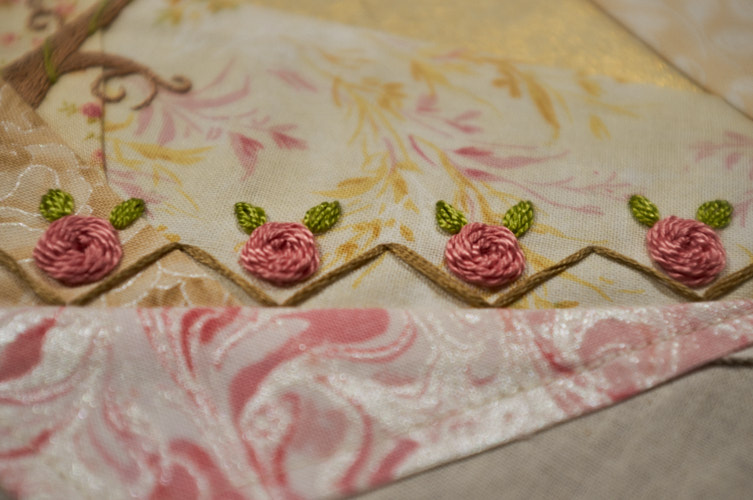
This block has a tiny herringbone stitch behind the tree, while a chevron stitch marches uphill. It is expanded upon by an overlap of wonky buttonhole stitching and flowers (straight stitch, daisy leaves filled with smaller detached chain stitches and a straight stitch, and woven ribbon petals).
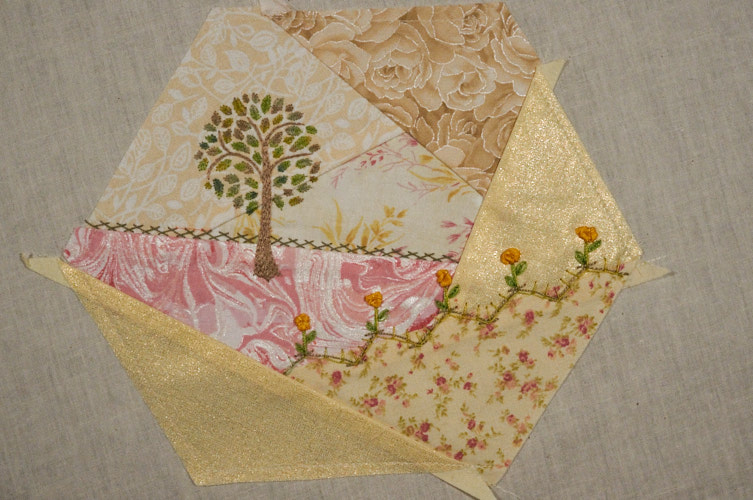

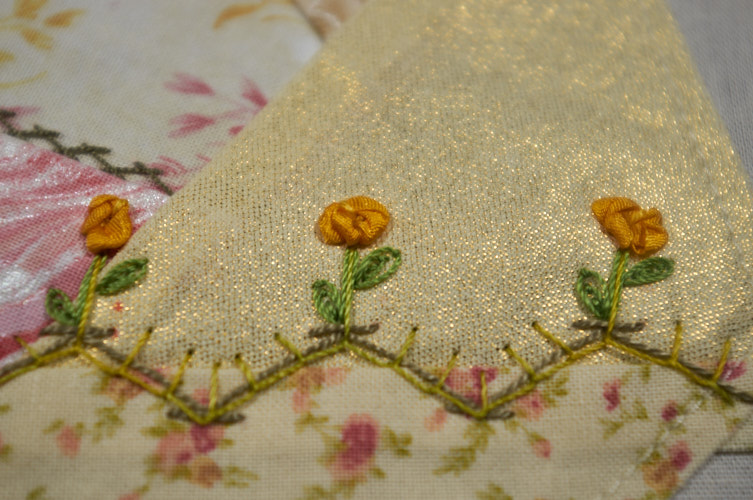
I chose a vine to add weight to this block. My go-to stitch is stem so after seeing my crazy quilt, I changed it up and used outline stitch. Truly, I had forgotten that there is a difference in look! It is decorated with ribbon stab-stitched leaves and fly stitch ribbon flowers. I hope to continue it to the connecting block. Let’s see if I remember that! Then I also added something else from my inspiration: chain stitch half-wheels with straight stitch spokes.


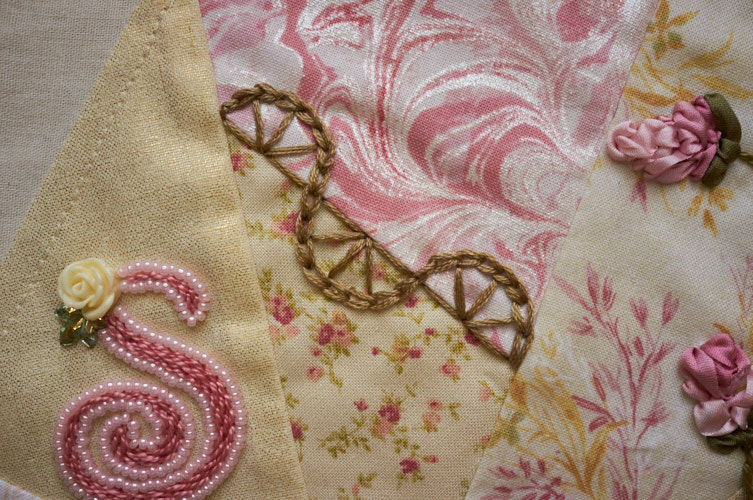
These blocks are not complete. Not only will more seams be treated, but I still have the other embellishments to add: buttons, charms, beads, and such. I have 9 hexagon blocks in total, and I will have to add diamond blocks between them, possibly, depending on how I want to sew it all together. Maybe I will even add a few more blocks to make it work out right – who knows! As I said, this project is in the Long Game pile.

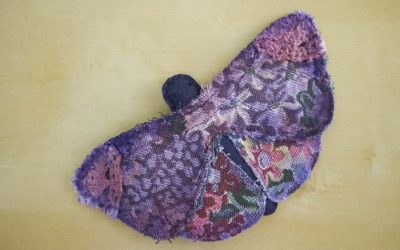
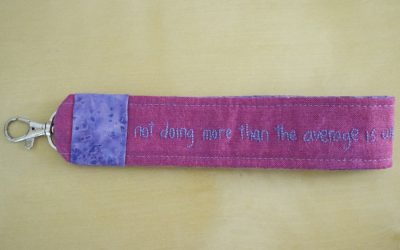

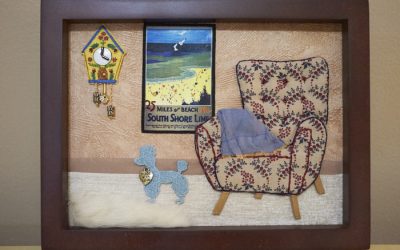




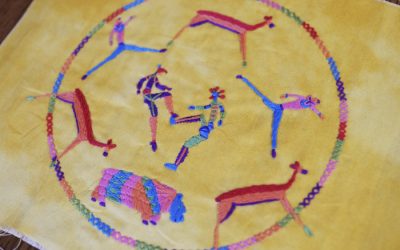
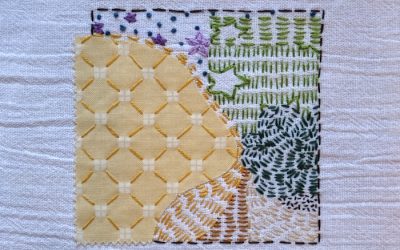





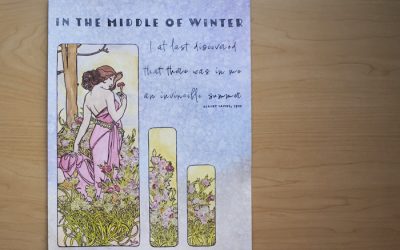
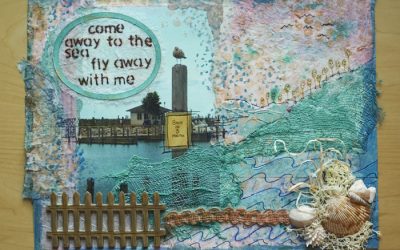


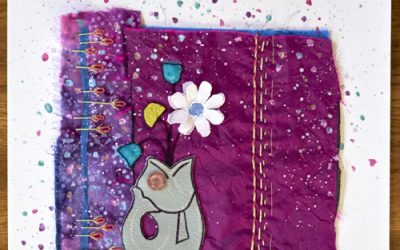
What a treasure you have in the ‘antique’ cq and a great inspiration for your own work. Your stitches are really neat. It is a delight to see, and will be for future generations, too.
Wow, thank you for the compliment, Queenie!